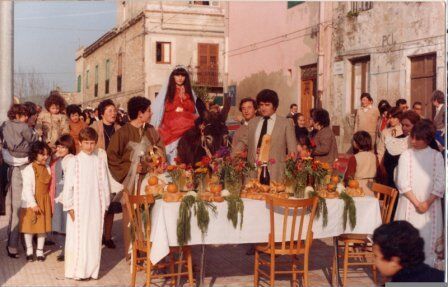Lunch of the Virgins
Street View (if present)
Street View is only available with Google Maps.
Description
Lunch of the Virgins
----------------
Technical sheet prepared by: Region of Sicily - Department of cultural heritage and Sicilian identity - CRicd: Regional center for inventory, cataloging and documentation and Sicilian regional film library
N. Prog. 97
Good: Lunch of the Virgins
Book: REI - Book of celebrations
Approval date: 13-04-2007
Category: Party / Ceremony
Province: Catania
Municipality: Motta Sant'Anastasia
Local denomination: The Neighbors
Chronological News
The lunch of the virgins is the historic lunch that during the nineteenth century the lords of the city offered, in the week before the feast of St. Joseph, to the children of the poor peasants.
The custom of these tables laden with every good and typical products of the time also extended to the middle class, up to the present day with the custom of inviting some young people from the neighborhood celebrating the so-called "close".
Recurrence: Annual
Date: March 19
Occasion: Celebrations in honor of St. Joseph
Function: Social and religious
Actors: Local community
Participants: The poor and the elderly
Description
The Verginelle lunch is a traditional practice widespread in various places in Sicily on the occasion of the feast of San Giuseppe.
In the town of Motta Sant'Anastasia the tradition of "Virgineddi”Is practiced by many as votive in honor of the Holy Fallegname.
The tradition has remained unchanged and currently elderly people also take part in the "lunch". The tables are set up a few days before the party, so much so that they are visited by the entire population. These are prepared with rich dishes and typical products of the earth such as pasta with chickpeas or wild fennel, rice with lentils, stewed broccoli, asparagus omelettes, products of the earth such as fennel and artichokes. Do not miss the desserts including ravioli and cannoli with ricotta, almond-based desserts and other typical local specialties, such as "Sfince Di San Giuseppe". Characteristic element of the rich tables is the bread of San Giuseppe, prepared in many traditional forms, characterized by a gilding obtained from the egg white spread on the surface and garnished with papaverine.
Author Profile: Francesca Maria Riccobene
Go to Google Maps
Send a notice to the publisher
[contact-form-7 id="18385"]


